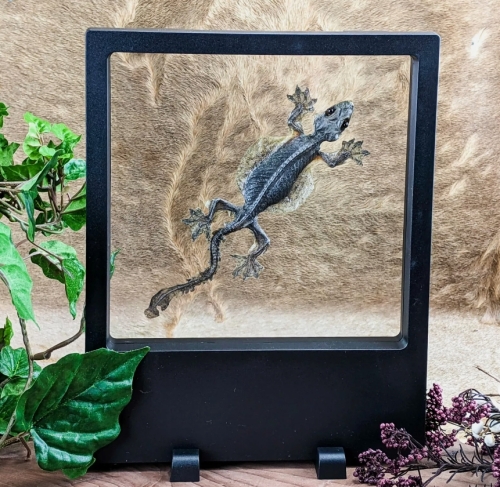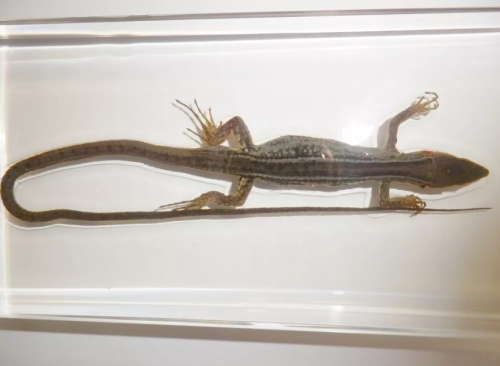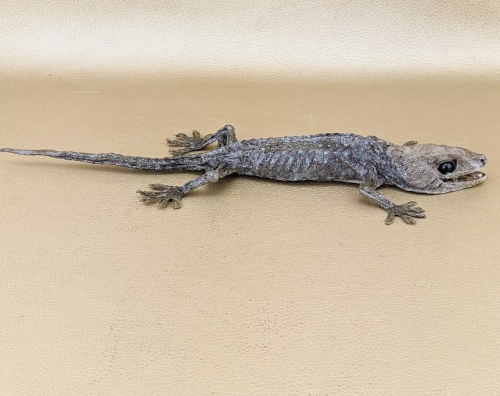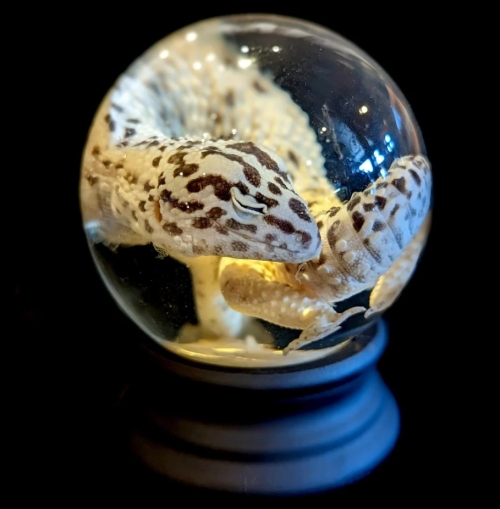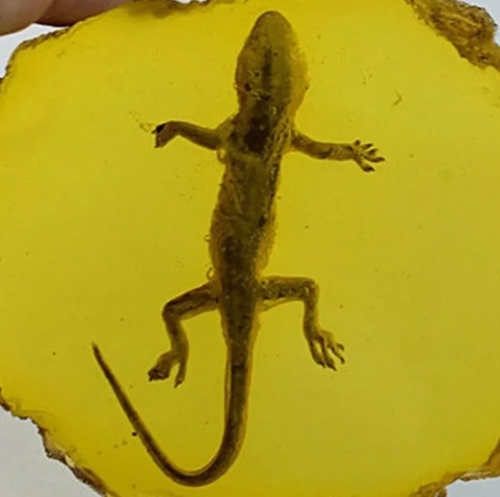Geckos are a common small reptile belonging to the lizard family known for their unique appearance and habits. Specimens of geckos show their biological characteristics and ecological adaptations. In many places, geckos are considered an important part of the ecosystem, capable of effectively controlling pest populations.
Geckos often have attractive spots or stripes on their skin that help camouflage them in their habitat. Their body structure is flexible, and special adhesion on their limbs allows them to easily climb walls and ceilings. This ability gives geckos an advantage when it comes to finding food and evading predators.
The study of gecko specimens can not only help people to further understand their physiological characteristics, but also reveal their ecological roles. Geckos feed mainly on insects, and they show quick reflexes and excellent hunting skills during the hunt. By looking at a specimen's digestive system, researchers can learn about its position in the food chain and its impact on the environment.
During the preparation of specimens, features such as color, shape, and weight are carefully preserved for future study and education. Specimens can not only be used for scientific research, but also for education, so that people can more intuitively understand the living habits and ecological environment of geckos. By looking at specimens, scholars and students are able to gain in-depth information about gecko reproduction, growth, and behavioral patterns.
In addition, the cultural symbolism of geckos cannot be ignored. In some cultures,geckos are regarded as auspicious symbols,representing luck and protection. It is widely believed that the presence of geckos helps to keep the peace of the home. This cultural belief further enhances the role of geckos in People's Daily lives.
To sum up,as an important representative of biodiversity,gecko specimens not only provide valuable information for scientific research.


